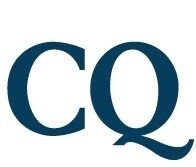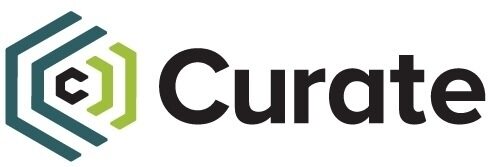
Highlights from the 2022 Supreme Court Term & What It All Means For Your Organization
by Michael Fenner and Harrison Covington, FiscalNote Professional Services
From elections to religious freedom, we explore the landmark cases of the 2022 U.S. Supreme Court term and look at the impact these decisions could have on your organization.

The 2022 U.S. Supreme Court term was nothing short of a blockbuster. This term saw fewer cases where certiorari was granted, and the Court wading into cultural issues of this political era. This Court also surprised many with some opinions by not going as far as anticipated in its rulings.
The Court was unanimous in their opinion 50 percent of the time and had at least one liberal justice in the majority 89 percent of the time. The opinions discussed in this article are the statistical outliers as it relates to the level of dissent on the bench.
Let’s dive into the most interesting and impactful moments in this Supreme Court term.
1. Elections and Maps
In the case of Moore v. Harper, Chief Justice John Roberts, along with Justices Barrett, Kavanaugh, Sotomayor, Kagan, and Jackson, examined the North Carolina Supreme Court's power to review the state’s federal congressional map. The State Congressional leaders argued based on the Independent State Legislature theory, asserting that the legislature has complete autonomy and could override popular votes without any oversight in federal elections. They further emphasized that the Supreme Court has previously ruled gerrymandering to be a political action in the case of Rucho v. Common Cause in 2019.
The Court effectively halted the Independent State Legislature theory and made it clear that future assertions would meet the same fate. This theory would have allowed legislatures to choose electors contrary to the state's popular vote, potentially causing election turmoil.
Therefore, theories of election fraud in the 2020 elections have been widely discredited, along with the implementation of the Electoral Count Reform and Presidential Transition Improvement Act of 2022, which limits the questions of authorities to potentially undermine the people’s will.
Chief Justice Roberts also wrote the majority opinion in Allen v. Milligan, affirming the Court’s precedent of Thornburg v. Gingles, 1986. The case determined that the Alabama federal congressional map was a violation of Section 2 of the Voting Rights Act (VRA). Following the 2020 Census, Alabama again was allocated seven representatives to the U.S. House. Petitioners argued that the state legislature gerrymandered by packing Black voters into a single district and dispersing others throughout the remaining.
Section 2 of the VRA — barring abridgment of voting based on race — led Roberts, Kavanaugh, and the Court’s three liberal Justices to rule that Alabama must once again redraw their districts with two black-majority districts. This decision surprised many across the nation as the expectation was that the court that overturned Roe v. Wade in the previous term — and also took up many hot-button cases related to race in the current term — would opt for a race-neutral ruling.
Today, the VRA remains where it has been since the earlier interpretations of Shelby County and Brnovich. For organizations whose main purpose is rooted in the VRA, section 2 remains a viable avenue to challenge congressional maps for the foreseeable future. Moore v. Harper has eliminated another avenue to challenge elections in favor of the legislature and emboldened the will of the people. The Court has effectively strengthened the right of the people to cast votes for those who they truly believe will represent them in both high-profile cases.
2. Religious Liberties
In one of the most high-profile cases of the term, 303 Creative LLC v. Elenis examined the intersection of artistic expression, freedom of speech, and anti-discrimination laws. In a 6-3 ruling written by Justice Gorsuch, the Court found that Colorado's anti-discrimination law was overzealous in its reach and violated the First Amendment.
The Court ruled that while business owners cannot discriminate against individuals in protected classes, they can refuse to provide certain services based on religious beliefs if those services are tied to expression.
This ruling reflects the 2020 majority opinion in Bostock v. Clayton County, also authored by Justice Gorsuch. In this ruling, the Court determined that businesses may not discriminate based on sex or gender identity under Title VII of the Civil Rights Act. By examining these two cases together, policymakers can deduce a judicial theory from this court: discrimination based on prejudice is prohibited in any context, but businesses are allowed to exercise their own beliefs and may decline service when it conflicts with their expressive rights.
In another case related to religious liberty, the Supreme Court reached a unanimous decision in Groff v. DeJoy. The ruling states that the federal government cannot compel individuals to work on their sabbath unless there is reasonable evidence of "undue hardship."
The Court ruled that employers are required to accommodate their employees' beliefs unless there are significant additional costs directly related to conducting their business. The Court emphasized that employee conflicts arising from accommodating the religious practices of their fellow workers do not qualify as reasonable examples of "undue hardship."
These high-profile religious liberty cases before the court this term have all resulted in resounding victories for religious plaintiffs. These favorable opinions mark a significant trend of support from the Court for religious rights. This will not be the last time an issue of this nature is presented before the court. While it may be years from now, there will be organizations that seek to challenge the opinion in 303 Creative. Legislatures will likely seek to craft bills that come as close as possible to the line the Court has drawn.
Religious organizations and plaintiffs will seek to further carve out first amendment protections, and the court will likely continue to grant them. Legislatures, lobbyists, litigators, and 501( c )(3) organizations advocating for this should begin to learn the language of this court if they are creating laws or arguments that facially do not appear to agree with the court. This Court’s 6-3 majority relies heavily on text and originalism, so arguments and laws should be rooted in those same principles to stand a chance before the bench.
3. Online Content Moderation
This term, the Court addressed various cases questioning the liability of social media platforms regarding harmful content. These cases involved issues such as mandated content moderation and whether these companies can be held accountable for the promotion of harmful content within their platforms.
The two cases, Twitter v. Taamneh and Gonzalez v. Google, revolved around the claim that the companies had knowingly assisted the Islamic State of Iraq and Syria (ISIS) by promoting terrorist activity through their platform's recommendation algorithms. These cases raised important questions about the interpretation of Section 230 of the Communications Decency Act, which aims to encourage content moderation.
However, the Court opted to base its rulings on the plausibility of claims under the Anti-Terrorism Act, thereby temporarily sidestepping the issue of whether Section 230 protects tech companies from liability for harmful content promoted through recommendation algorithms.
The Court will likely hear similar cases in the future questioning the interpretation of Section 230. This may lead to a critical examination of states' rights to either limit or mandate the moderation of harmful content. There could be rulings on challenges to laws in Texas and Florida that aim to regulate how social media platforms handle content moderation.
The original co-authors of the Communication Decency Act suggest that Section 230 allows websites to moderate content as they see fit. However, challenges arise when dealing with AI-generated content and algorithms, as it becomes less clear what should be classified as third-party content and how these tools can be regulated in promoting content.
The following term is likely to have cases with more explicit impacts on Section 230. Where the court declined to rule in favor or against 230 due to the facts of the case, if the Court is looking to examine 230 it will be in the upcoming term. Technology companies should be on alert for the following term, where it is unlikely Congress will act on reforming the Communications Decency Act before the Court has an opportunity to review the law that has the potential to transform online communication once again.
4. Student Loans
In the 6-3 ruling of Biden v. Nebraska, the Court struck down President Biden's loan forgiveness program, which would have canceled $430 billion in student loan debt. The majority opinion, written by Chief Justice Roberts, expanded the "major questions" doctrine, providing that the Executive Branch did not have the authority under the HEROES Act to provide loan forgiveness on such a scale.
The loan forgiveness plan, which would have provided debt relief for over 40 million borrowers, will now be rescinded, and the Biden Administration is currently exploring alternative options. Additionally, Congress will have the sole jurisdiction to facilitate future broad-sweeping loan forgiveness initiatives.
Opponents of this view argue that the approach may impede effective governance. The increased reliance on Congress for major policy decisions may overlook the technical expertise of administrative agencies and stifle the government's ability to address complex issues like student loan debt. However, supporters of the decision see it as an essential check on the powers of the executive branch, allowing Congress full authority over its prescribed jurisdiction.
Banks and other financial institutions that loaned out federally backed loans will now continue to collect on the principal as they would have before the pause began in 2020. The Biden administration agreed to formally restart loan payments on October 1, 2023, as part of the agreement reached with House Speaker Kevin McCarthy in the debt ceiling negotiations.
Following the Courts ruling against the administration, President Biden announced an "on-ramp" period for borrowers. In the first 12 months of payments resuming, if a borrower falls short on a payment, this will not be negatively impacted.
5. Affirmative Action
In the 6-3 ruling in Student for Fair Admissions v. Harvard, based on interpretations of the Fourteenth Amendment prohibiting discrimination based on race, the Court provided that using race as a factor in college admissions is ultimately unconstitutional, regardless of intent or result. The majority opinion, authored by Chief Justice John Roberts, argued that the law must eliminate all variations of such discrimination to eliminate racial discrimination in totality. Although race may be considered in other aspects of an application, such as considering racial discrimination as a factor of a student's character, race may not be considered in making an ultimate admission decision for an applicant.
The decision is expected to have far-reaching effects beyond college admissions. It may prompt public and corporate entities to reassess their use of racial preferences and lead to ongoing legal challenges against diversity, equity, and inclusion initiatives. At the same time, advocates are pursuing alternative approaches to ensure racial equity in higher education. They are challenging various barriers to admission, such as standardized tests and other metrics that they believe have discriminatory consequences.
Summary of the Term
This term continued the patterns of the previous terms with the new conservative bloc. This iteration of Roberts’ Court continually advises Congress and legislatures across the country to be explicit in their text, given the textualist and originalist approach of the current Court. Justice Barrett in her concurrence for Biden v. Nebraska pens that the Court expects “clear congressional authorization” regarding executive agency authority. In other words, the Court seeks a common-sense approach to how Congress delegates significant policy decisions to administrative agencies.
This term also saw impactful opinions on international arbitration law, state standing as it relates to border security, refined interpretation of serious, genuine expressions that convey imminent harm or danger or “true threats,” further checks on EPA and other regulatory agencies' authority, and child custody within Indian law.
The 57 cases granted certiorari by the Court continue the theme of scrutinizing regulators and executive overreach, expanding First Amendment civil liberties, and weighing in on hot-button political issues.
Ready to Learn More?
See how PolicyNote+ lets your team access deeper insights and datasets from our award-winning professional services team.













